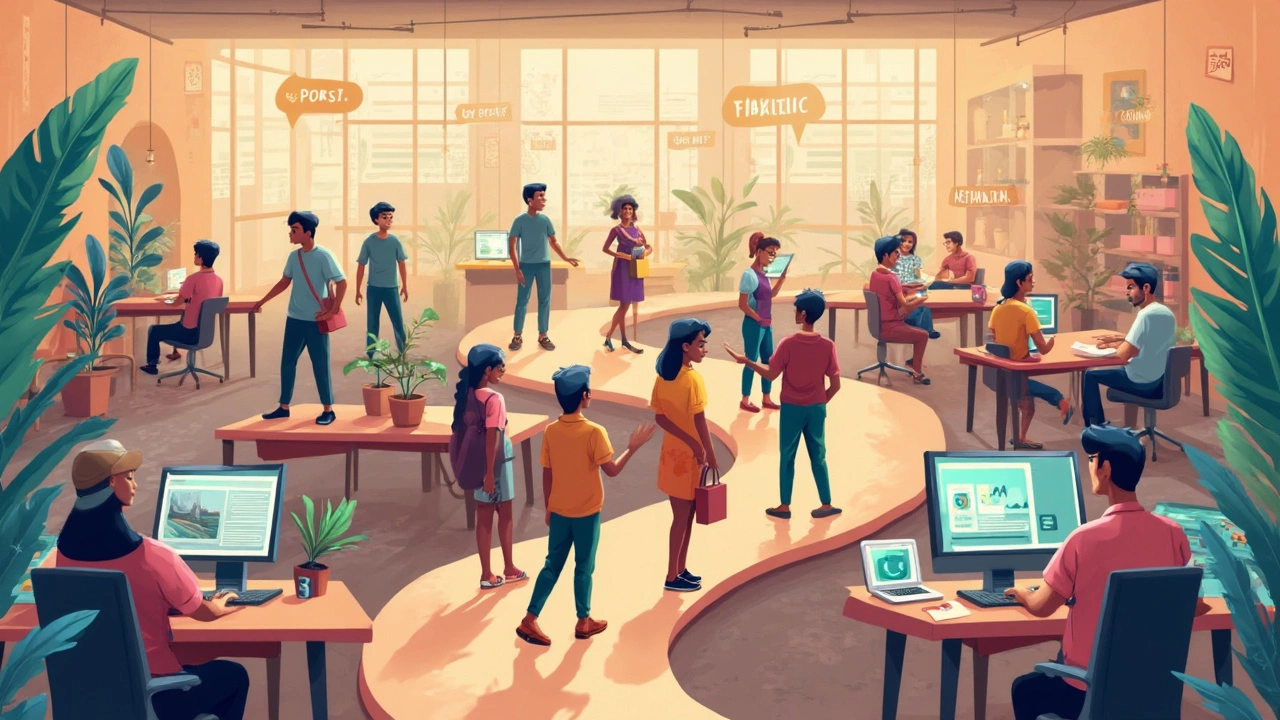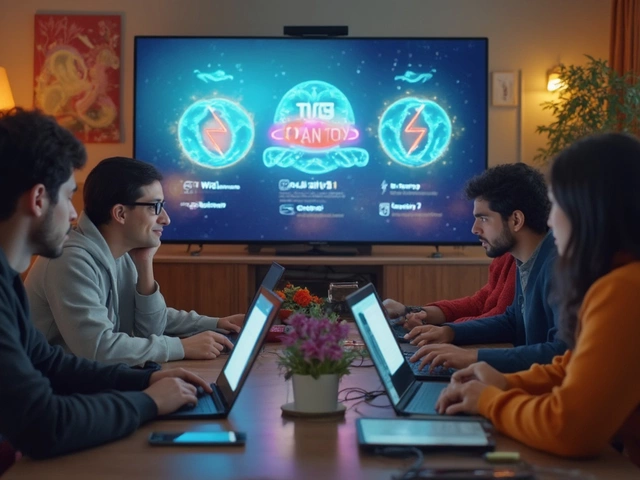How Long Does It Take to Learn Digital Marketing? The Real Timeline
People love to say you can become a digital marketing pro in a few months. Not so fast. The truth? It depends on what you want to achieve and how deep you go. Digital marketing isn’t just about learning what Facebook ads are; it’s understanding how to connect with actual people online, how to read the numbers, and how to keep up when everything changes every two minutes.
Maybe you’re thinking about taking a digital marketing course or jumping in on your own. Either way, you’ll hear wild promises—some say you’re job-ready in 8 weeks, others insist it takes years. Here’s a reality check: most beginners get a decent grip on the basics in about 2-3 months if they study consistently, about an hour a day. Getting really good—think freelance gigs or landing a job—often takes 6 months to a year. But there are ways to speed things up if you’re smart about it.
- What Digital Marketing Actually Covers
- How Long Does It Take to Learn the Basics?
- What Slows People Down (and How to Avoid It)
- Smart Shortcuts and Real-World Tips
What Digital Marketing Actually Covers
When most people hear digital marketing, they picture ads popping up on Instagram or flashy Google banners. But it’s more than just buying ad space. It’s a massive field with plenty of moving parts, and you don’t have to master all of them at once. Here’s what sits under the digital marketing umbrella:
- Social Media Marketing: This covers running pages and campaigns on platforms like Facebook, Instagram, X (Twitter), LinkedIn, and even TikTok. It’s not just about posting; it’s about understanding what sticks with your audience, using paid ads, and tracking results with analytics.
- Search Engine Optimization (SEO): Want your website to show up on Google? This is where SEO comes in. It’s about using keywords, building solid content, and tweaking your site so Google likes it—and actually shows it to people searching.
- Content Marketing: This involves blogging, making videos, or creating helpful guides—basically, giving people answers so they stick around and trust you. Great content gets shared and pulls in traffic without paying for each click.
- Email Marketing: Newsletters, special offers, event invites—email is still one of the most effective digital marketing tools. A good campaign here can have big ROI if you know what you’re doing.
- Pay-Per-Click (PPC) Ads: These are the ads you see at the top of Google search or while scrolling through social. You pay only if someone clicks. Getting these campaigns right takes a mix of math, ad-copy skills, and patience for testing what works.
- Analytics and Measurement: If you’re not tracking what’s actually working, it’s just guesswork. Platforms like Google Analytics let you see how people find you, what they do on your site, and where you’re losing them.
Here’s a quick breakdown of just how many skill areas can fit under "digital marketing":
| Area | Main Skills Needed |
|---|---|
| Social Media | Content creation, audience targeting, analytics |
| SEO | Keyword research, basic HTML, link building |
| Content Marketing | Writing, planning, research |
| Email Marketing | Copywriting, design, automation |
| PPC | Ad creation, budget management, data analysis |
You don’t have to learn every single piece at the same time. Most start by picking one or two focus areas and branching out from there. The best part? These skills build on each other, so even a little bit of effort in one area can help you a ton in another. Don’t get overwhelmed by the list—think of it as a menu, not a must-do checklist.
How Long Does It Take to Learn the Basics?
If you ask a bunch of marketers how long it takes to learn the basics of digital marketing, you’ll get some wildly different answers. But strip away the hype, and most folks settle somewhere between 8 and 12 weeks for a solid foundation—if you keep your pace steady, around 5-7 hours per week. That’s not guessing; most beginner-friendly online marketing courses are built to fit that timeline, too.
One report from LinkedIn Learning found that newbies typically need about 40-60 hours to pick up essentials like SEO, content marketing, email strategy, and pay-per-click ads. That’s if you’re learning from scratch, not rushing, and practicing a bit as you go. Chris Baird, a veteran marketer, puts it this way:
"Anyone can learn the basics of digital marketing in a couple of months, as long as they practice hands-on and not just watch videos."
Here’s what most people tackle in those early weeks:
- Understanding how social media fits into the digital marketing picture
- Getting the hang of basic SEO (keywords, on-page stuff)
- Running simple Google or Facebook ads
- Figuring out what makes a good marketing email
- Reading basic analytics—what's working, what’s not
Plenty of free tools help you get there, too. For example, Google’s Digital Garage and HubSpot Academy both offer bite-sized lessons, most under 30 minutes, making it easy to chip away after work or school.
It’s not a race, but let’s be honest—life’s easier if you can see real progress. Check out this timeline for context:
| What You Learn | Usual Time Needed |
|---|---|
| Social Media Basics | 2 weeks |
| SEO 101 | 2-3 weeks |
| Email Marketing | 1-2 weeks |
| PPC Basics | 2 weeks |
| Analytics Fundamentals | 1 week |
Add it up, and the first two to three months are enough to stop feeling lost—and maybe even help a friend’s business get online.

What Slows People Down (and How to Avoid It)
Ever wonder why some people pick up digital marketing quickly, while others spin their wheels for months? It’s rarely about being a genius. Most of the time, people get tripped up by avoidable mistakes or by missing some basics that really matter.
One common speed bump is trying to do everything at once. There’s social media, email marketing, SEO, Google Ads, analytics—the list feels never-ending. Jumping into every platform and tactic leads to overload and confusion. Instead, focus on one thing at a time until you’ve got a handle on it. For example, nail the basics of social media before worrying about paid search campaigns.
Another big slowdown: skipping the hands-on part. Reading blogs and watching YouTube is a start, but unless you actually try things—running a basic ad, writing a real email campaign, checking the analytics—none of it sticks. Learning by doing always beats just reading or listening. Practicing on your own project or a made-up business works wonders.
People also get stuck when they ignore simple but important data. Here’s one for you: according to a recent industry survey, over 60% of new marketers said they got discouraged when they couldn’t see direct results right away. That’s understandable—digital marketing is full of numbers, but not all of them move as fast as we wish. If you don’t see instant wins, don’t take it as a sign that you’re failing. Sometimes it just means the channel or campaign needs more time or tweaks.
| Common Roadblocks | What Actually Helps |
|---|---|
| Trying to learn too many topics | Stick to one skill set first |
| Passive learning (just watching/reading) | Do real hands-on practice |
| Getting stuck in theory | Launch small, real-life campaigns |
| Expecting overnight results | Track progress over weeks, not days |
Let’s not forget another big time-waster: outdated resources. Digital marketing keeps evolving. Courses or blogs from three years ago might steer you way off track. Always check the publish date and stick to content that updates regularly—Google changes its algorithms all the time, and ad platforms get new features every few months.
Quick checklist for avoiding these traps:
- Pick one digital marketing skill to focus on at a time.
- Test what you learn as soon as you can—even if you make mistakes.
- Track your work; watch for slow but steady progress, not overnight wins.
- Use up-to-date articles, courses, and case studies.
Stick to these and you’ll save yourself months of frustration, while actually learning things you can use in real life.
Smart Shortcuts and Real-World Tips
Cutting the learning curve for digital marketing isn’t about being a genius. It’s about using proven tricks, leaning into real tasks, and skipping the stuff that doesn’t really matter. Want to know what actually works in the real world? Try these:
- Apply What You Learn Immediately: After you watch a quick video or take a mini-course, use your own social media, website, or even a dummy project to try out new tactics. You’ll remember stuff way better than if you just read notes.
- Reverse-Engineer What Works: Take a look at ads or emails from brands you follow. What grabs your eye? How are they running their campaigns? Use browser plugins like Facebook Ad Library or MozBar to learn what competitors are doing right now.
- Focus on One Path First: Digital marketing is massive—don’t try to master everything at once. Zero in on Google Ads, Facebook/Instagram, or email marketing, and get decent at one before jumping into another.
- Track Your Progress: Set up a free Google Analytics account on your own blog or site, and watch how small changes actually shift the numbers. This is the fastest way to get the hang of real data, not just theory.
- Grab Free Certifications: A ton of platforms (Google, Meta, HubSpot) offer short, solid, free certifications. These aren’t fancy degrees, but they look great on your CV and help you understand platforms directly.
Speaking of real-world advice, Neil Patel, a huge name in marketing, puts it bluntly:
"If you’re not constantly experimenting, you’re not learning. The best marketers run tests every single week—even if they fail."
One common rookie mistake is binge-watching YouTube tutorials without action. If you want skills, you need sweat—try running a small $20 ad campaign, or offer to help a friend’s project. These practical steps do way more than memorizing terms.
By the way, HubSpot’s Annual Marketing Report 2023 listed the most in-demand digital marketing skills in this order:
| Skill | Demand Level |
|---|---|
| SEO | 85% |
| Content Marketing | 78% |
| Social Media | 71% |
| Email Marketing | 68% |
So, if you want that first job, focus your energy where companies are searching for people—skills like SEO, content creation, and basic analytics. Ditch the perfectionism, get your hands dirty early, and keep coming back to the stuff that actually drives results—not just what looks cool on your feed.





